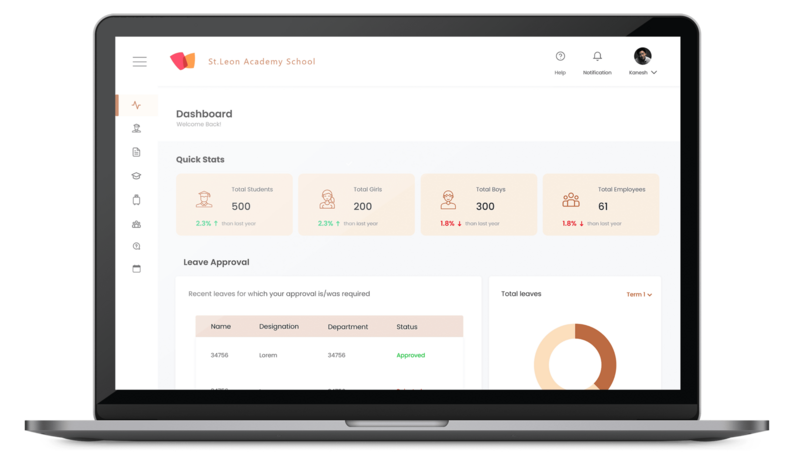How will Augmented Reality transform education?
How will Augmented Reality transform education?
In the race to transform education with technology, Augmented Reality (AR) is increasingly being identified as a means of overhauling mainstream classroom teaching methods. Students of all levels and stages of education can benefit from interactive learning experiences, through the advent of AR.
If you have ever played ‘Pokémon Go’ on your smartphone, you might be able to comprehend the buzz around how AR has gripped the world. To put it simply, the AR features of the game blended real world with virtual gameplay to produce an engaging video game format that charmed a variety of audiences worldwide. This concept also spiked major interest in AR among students, and there was no coming back from that.

The world of education and technology
The disruption of the education sector with technology is no stranger to headlines. Gone are
the days where students were meant to read lines of text and regurgitate them for an exam.
With technology powering up the learning environment, it might be unfair to stop at mere
projectors and digital presentations to assist students while learning.
If the numbers are to be believed, the education sector will grow exponentially to reach a
worth of US$250 billion by the year 2020. Several reports have highlighted the stark
potential of AR, which could bring about a revolution in education across all levels.
What is Augmented Reality, exactly?
AR technology is what you get by combining digital information with the user’s environment
in real time. From NFL football games to Google Glass, the technology has walked down
great distances in our world to shake down not just the education industry, but the domains
of marketing, tourism and health care, amongst others.
Practical applications of AR technology, such as military, medicine, navigation, sightseeing,
maintenance and repair, gaming, advertising and promotion, are not new across the
industries anymore. As a matter of fact, the technology is making great strides in the
direction of fast updates and enhancements.
Augmented reality in education

Consider a classroom environment and the subjects that are commonly taught within it.
Whether it is science or arts, augmented reality can be used quite effectively to transform the
subject matter and the manner of teaching to students. Teachers are increasingly vouching
for the use of AR in classrooms, owing to increased attention span among students and the
ability to deliver varied information in a far more interesting manner. In the long run, AR
stands to benefit students by inducing a problem-solving attitude, improving cognitive skills,
delivering learning gains, providing motivation, enhancing interaction and enabling
collaboration. The resulting positive attitude among students makes the investment and
upgrade worth it.
Imagine this scenario - during a history lesson, the students are currently being taken
through a module on Egypt, specifically, how the pyramids were built. Digital projections and
visualisations of these concepts can have such a lasting impact on students that not only will
they enjoy learning these concepts, but it will be far easier for them to retain them and
provide answers related to them, in their exams. If set up at the right scale, the technology
can produce limitless possibilities for students and teachers alike.
Classroom applications of Augmented Reality
- Mini lessons at home: Students can scan a page out of their textbook or notebook, which can reveal their teacher helping them solve that problem.
- Sharing reviews: Students can attach their brief reviews of a novel or book which they have completed and share it for instant access by other students.
- Enhancing lab safety: Triggers placed around a lab can be scanned to understand the related security procedures and uses of different lab items
- Support hearing-impaired students: Flashcards for vocabulary words, which contain a video overlay, can help students understand a typical sign or phrase.
- Self learning: Using various interactive applications, students can learn on their own time topics and subjects that are of greater interest to them.
- Facing the real world: For most educational institutes, the priority has shifted from book-based learning to using mixed reality, so that students can find themselves placed at a better level to manage and tackle the challenges of the world around them.
- Flexibility: With a gradual shift in the approach to learning and assessment of students, there is a wider scope for learners to explore the concepts and facts related to a given topic and subject.

What’s next?
The conventional role of teachers within a classroom is gradually taking a different road.
With the inclusion of technology in education, teachers’ roles have not been made
redundant; instead, they are now aided with tools and gadgets to assist them in delivering
enhanced learning experiences to students.
The role of AR is not limited to providing a fun channel of learning to students. If organised and planned, in the right manner, it can help students grasp concepts and facts faster and far more efficiently than simply rote learning them out of textbooks. In the long run, this technology stands to bring significant changes to the personality of students, developing their skills for the greater good.



